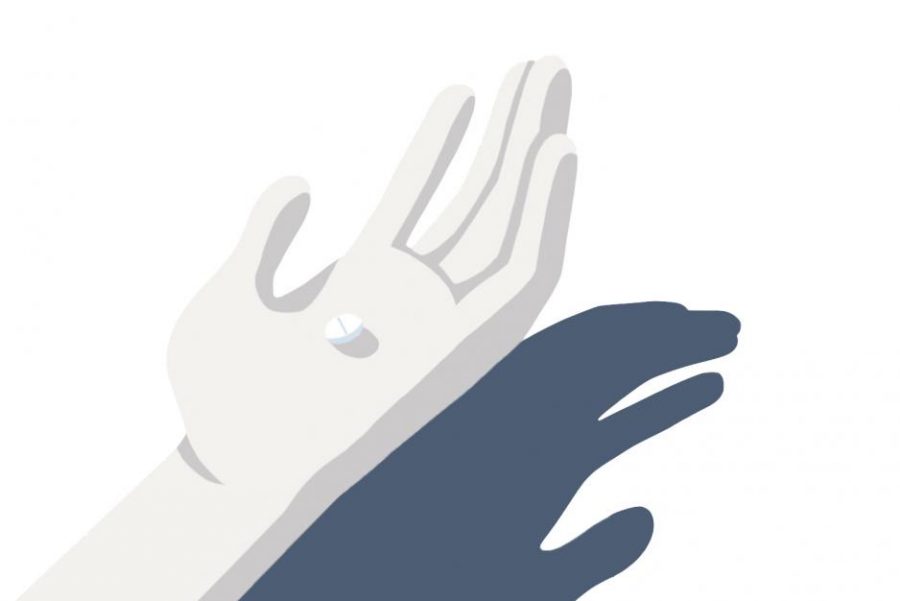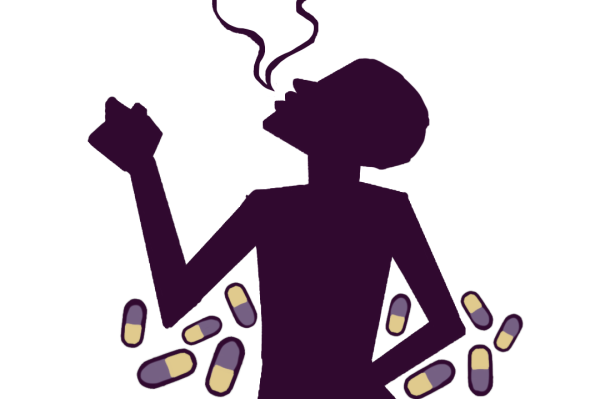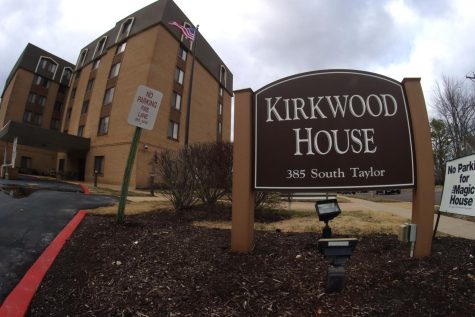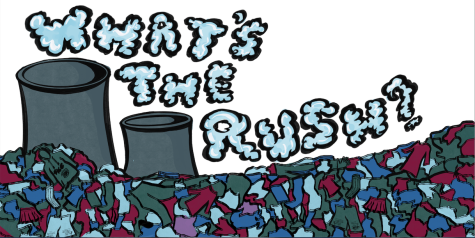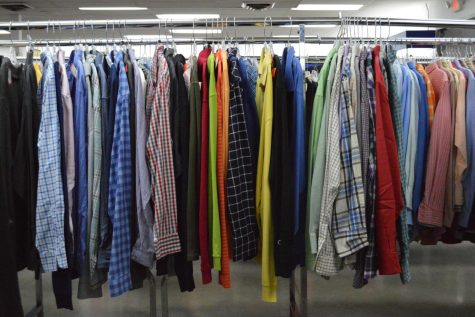Prescription for addiction
art by Maggie Burton
A woman named Emily from Rochester, New York, had a doctor who prescribed her painkillers for fibromyalgia and arthritis. She grew up in an upper-class suburb and according to PBS, after taking the painkillers for years and building a physical dependency, her doctor made the decision to stop writing her any further prescriptions, which meant her source of everyday relief was stripped away. To prevent herself from getting sick and suffering through withdrawal symptoms, she began illegally buying pills off the streets. When the pills became too expensive, she turned to heroin.
Stories like Emily’s are not new. According to Talbott Recovery, in the U.S. alone, as of 2018, approximately 54 million people over the age of 12 have used prescription drugs for non-medical reasons. Even as the number of prescriptions available to someone decreases, dependency for those prescription drugs does not diminish. Some people cannot continue to pay for opioids and then turn to street drugs like heroin since, according to CNN, a 60-milligram pill costs 60 dollars and the equivalent amount of heroin only costs ten dollars. According to The National Institute on Drug Abuse, 80 percent of Americans using heroin reported misusing prescription opioids first.
“The majority of people start with pills and then they graduate on to [injection,]” Robert Riley, speaker and former heroin addict, said. “They start off with [pills] and then they can’t supply their habit enough. They can’t get ahold of enough pills, so they eventually turn to street drugs.”
When prescription opioids fall in the wrong hands they can be just as dangerous as heroin, according to Gina Woodard, health teacher. According to Talbott Recovery, 25 percent of people who misused prescription drugs by the age of 13 ended up with an addiction at some point in their life, which means doctors prescribe substances as addictive as heroin.
“A lot of people don’t start off with heroin,” Woodard said. “They start with prescription pills because they had their wisdom teeth out [or] because they had a knee surgery. It’s an innocent person not looking to get high, just looking for pain relief.”
The signs of opioid abuse are not always obvious. The subtle changes in a person’s routine or social group can be a signal that a person is battling with addiction, according to Riley.
“They report having flu-like symptoms more often because those are withdrawals,” Riley said. “They start isolating [themselves.] Things start coming up missing at their house: electronics, things of value, spoons. I tell parents that all the time, ‘Have you checked your drawer and seen how many spoons you have?’”
According to Riley, addiction is a slippery slope. Once someone begins to fall, it is difficult to get back on top. Addicts will continue to crave the feeling opioids give them even when they no longer require them for medical reasons. The opioids release endorphins in a person’s body and boost feelings of pleasure.
“Addiction is a disease. It’s a sickness,” Kimberly Sweesy, senior grade level counselor, said. “[Users] get sick if they don’t use it. They get sick if they do use it.”
Opioid abuse is not a background or underlying issue. According to Drug-Free World, prescription drugs are abused more than cocaine, heroin and methamphetamine combined. This means that when it comes to illicit drugs use, prescription drugs are second behind marijuana.
“I’m seeing more of kids with not just pot and alcohol problems, but situations such as “I got Vyvanse or Xanax off the street,”” Sweesy said. “It’s more of those kinds of things than what used to be the standard.”
The National Safety Council conducted a study to find which states have taken actions to end the opioid epidemic. They used the information available to see if each state met six key actions: prescriber education, prescription guidelines, prescription drug monitoring programs, data sharing, treating overdose and opioid use disorder treatment. Missouri ranked the worst among all 50 states, achieving only one key action: opioid use disorder treatment. One area Missouri failed in was prescription guidelines, meaning Missouri lacks a strong enforcement of how doctors should prescribe opioids to their patients.
“We are less than 5 percent of the world’s population and we consume about 80 percent of the world’s opioids,” Woodard said. “I don’t think we have 80 percent of the world’s pain.”
Your donation will support the student journalists of Kirkwood High School. Your contribution will allow us to purchase equipment and cover our annual website hosting costs.

Interests: Playing tennis, traveling and watching Netflix.
Favorite musical artist: Billie Eillish.
Favorite quote:“Whenever I’m about to do...
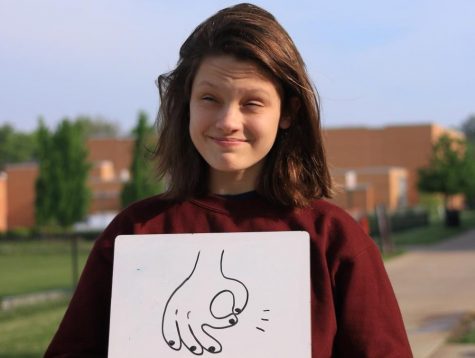
Interests: Drawing, playing alto saxophone, sleeping, listening to music, contemplating my purpose in this universe, eating
Favorite quote: “Can...


